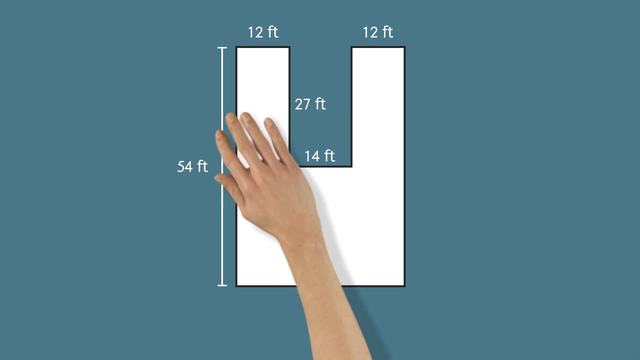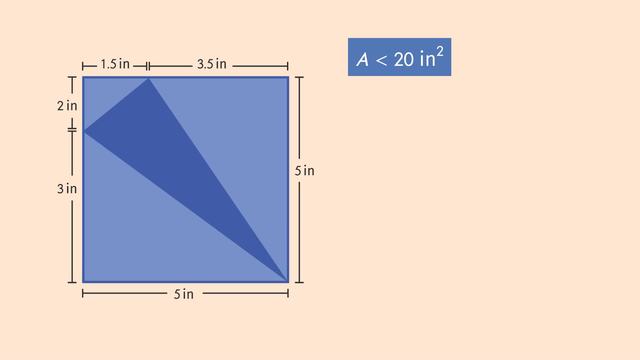Area of Parallelograms and Trapezoids on the Coordinate Plane


Basics on the topic Area of Parallelograms and Trapezoids on the Coordinate Plane
After this lesson, you will be able to find the area of two kinds of shapes on the coordinate plane.
The lesson begins by teaching how area formulas can be used for shapes on the coordinate plane, by using coordinates or counting to determine lengths. The lesson concludes with a reminder that composition and decomposition are also great strategies for finding areas on the coordinate plane.
Learn about areas on the coordinate plane by building a glider for Prince Icarus!
This video includes key concepts, notation, and vocabulary such as: the area formula for a parallelogram, and the area formula for a trapezoid.
Before watching this video, you should already be familiar with the formulas for the areas of parallelograms and trapezoids, and how to use composition and decomposition to find the areas of shapes. You should also know how to use subtraction to calculate lengths of vertical and horizontal line segments on the coordinate plane.
After watching this video, you will be prepared to learn how to determine the areas and perimeters of other polygons on the coordinate plane.
Common Core Standard(s) in focus: 7.G.B.4, 7.G.B.6 A video intended for math students in the 8th grade Recommended for students who are 13 - 14 years old
Transcript Area of Parallelograms and Trapezoids on the Coordinate Plane
Prince Icarus is an ostrich with a problem. As Prince, he can have almost everything his heart desires, except for one thing. He'll never be able to fly. But Icarus just got a hot tip that might just change his luck: Custom gliders, made by a guy named Gilbert who lives in a tree! But in order to make sure these gliders are fit for a Prince, we'll have to find the areas of parallelograms and trapezoids on the coordinate plane. This parallelogram represents the first glider that Prince Icarus has his sights set on. We need to find the area of this shape, so that Gilbert knows exactly how much material he needs to build the glider. The area formula for a parallelogram requires us to find the lengths of the base and height. So how can we find the length of the base? This line segment, from the point (-4, -2) to the point (4, -2), is the base. The y-values of these points are the same, so to find the distance between 4 and -4 we can subtract to get 8. Looking at the key, we can see that each unit on the grid represents 1 foot. So that makes the base 8 feet long. Now to find the height! Where would you measure the height of this parallelogram? We can start at any point along the base, as long as we measure the PERPENDICULAR distance to the opposite parallel side. So let's draw our height line here. Hmm, the exact coordinates of this point aren't labeled, so let's just count the distance on the grid instead. Looks like our measurement for the height is 7 feet. Multiplying, we get an area of 56 square feet! It's a glider fit for a king, er, prince. Let's take a look at another glider Icarus has his sights on. In order to customize this trapezoid-shaped glider for the Prince, we're going to have to calculate the area. The area of any trapezoid can be found using the formula: area equals one-half times the sum of the bases, multiplied by the height. So which sides should we use for bases 1 and 2? Remember that the bases in a trapezoid are parallel to each other, so let's use the top and bottom sides. The line segment on the bottom extends from the point (-7, -6) to the point (4, -6). Because their y-values are the same, we can subtract their x-values to find the length of this side. That gives us a length of 11 feet for base 1. The second base is much shorter, so let's just count how long it is. Looks like we have a measurement of 5 feet for base 2. To determine the height, let's calculate the perpendicular distance between these two points on the grid. Since their x-values are the same, we just need to subtract their y-values to calculate the distance between these two points. That gives us a length of 8 feet for the height. Now to plug that into our formula and simplify. Looks like Prince Icarus will have lots of room to spread his wings in his 64 square foot custom glider! While Gilbert is preparing the gliders for takeoff, let's review. When finding the areas of parallelograms and trapezoids on the coordinate plane, you can use the area formulas you already know. To find the lengths of bases and heights, check to see if your points have an 'x' or 'y' coordinate in common. If they do, you can subtract the other coordinates to calculate your needed length. Alternatively, if the endpoints of your lengths align with whole coordinates, you can always just count units on the coordinate plane. It looks like Prince Icarus is ready to test out one of his awesome new gliders. And he's off! And he's...stuck.













